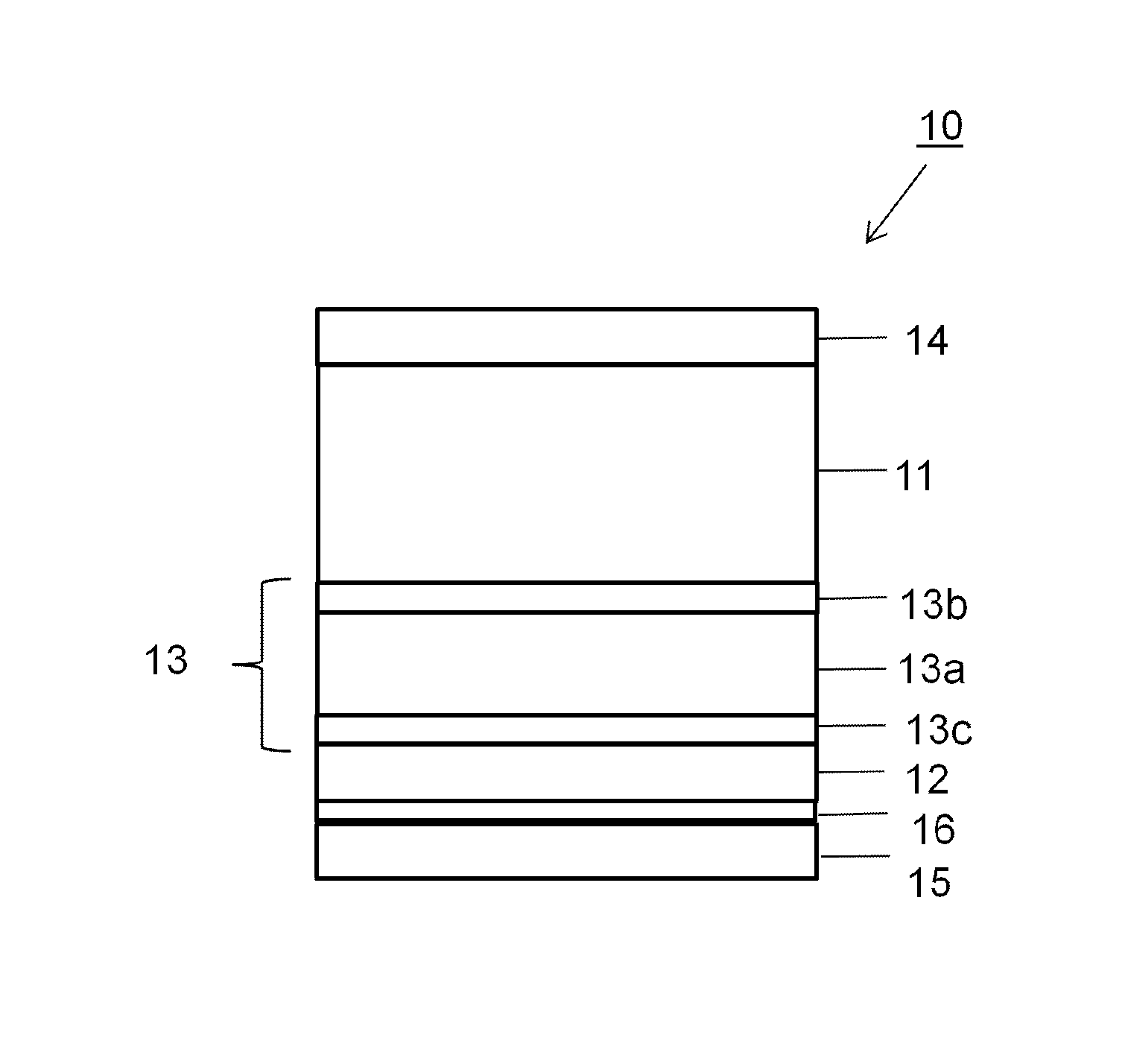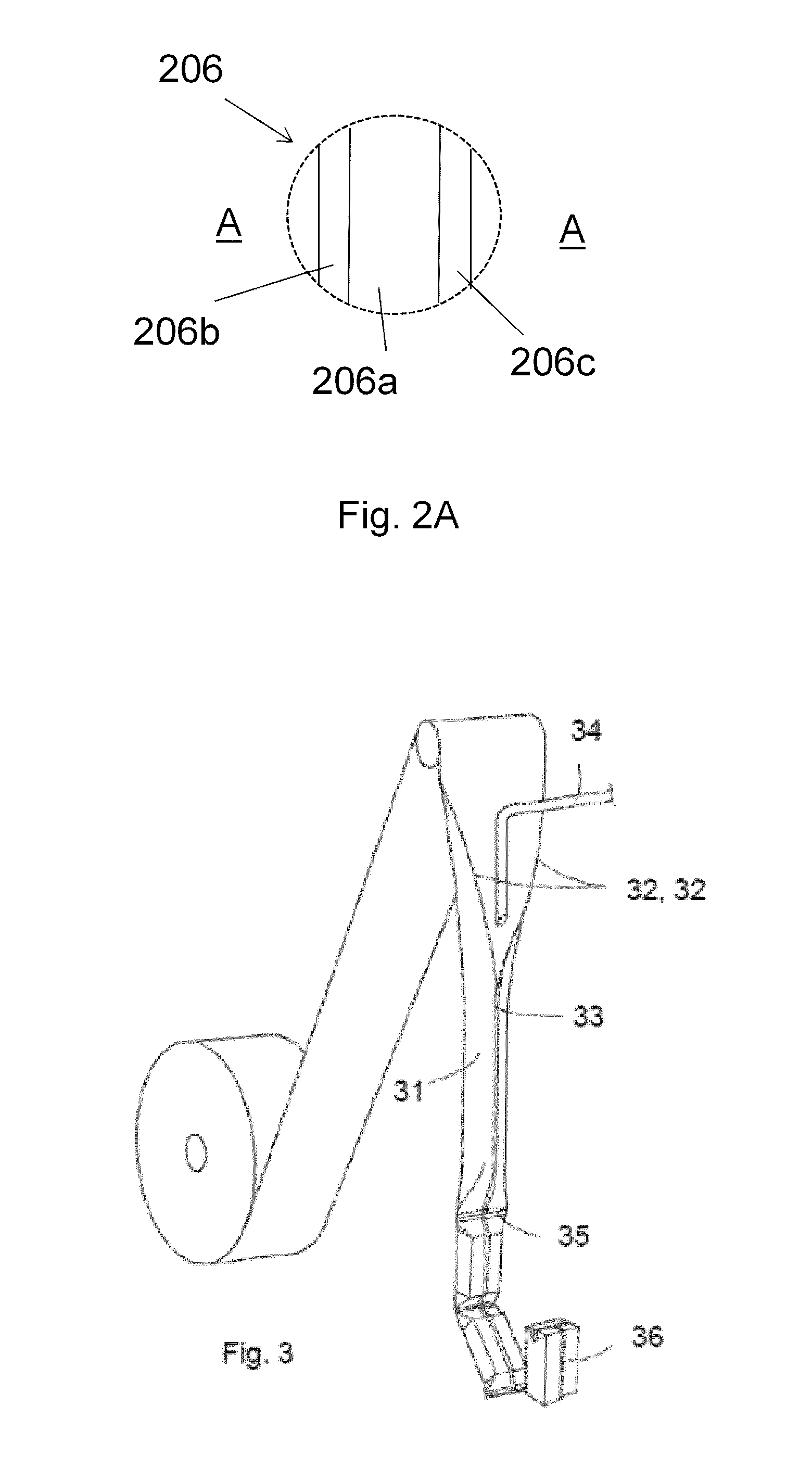Packaging laminate, method for producing same, and packaging container produced from the packaging laminate
a packaging laminate and packaging container technology, applied in the direction of lamination, paper/cardboard containers, containers, etc., can solve the problems of increasing the emission of environmentally harmful greenhouse gases, increasing the consumption of energy, and reducing the environmental protection effect of the environment, so as to achieve the effect of not unnecessarily excessive energy consumption
- Summary
- Abstract
- Description
- Claims
- Application Information
AI Technical Summary
Benefits of technology
Problems solved by technology
Method used
Image
Examples
example 1
[0092]Packaging laminate 10 was produced with the composition indicated in the following table:
Coating quantity,ReferenceCoating quantity,g / m2 (Example 1sign ing / m2 (referenceaccording toLaminate layerFIGS.example 1)the invention)Low-density141212polyethylene (LDPE)Paperboard11Ethylene-acrylic acid 13b—3copolymer (EAA)(Primacor 3540Dow; with about8 weight-%acrylicacid content)Low-density 13a2010polyethylene (LDPE)(Novex 19N730)(Novex 19N730)(Autoclave-LDPE)Ethylene-acrylic acid 13c3copolymer (EAA)(Primacor 3540Dow)Aluminium foil126.3 μm6.3 μmEthylene-acrylic acid(not 6 6copolymer (EAA)shown)Blend of LDPE and m-151919LLDPE (weight ratio30:70)
[0093]Packaging laminate 10 according to the invention in Example 1 was produced by co-extrusion of the material layers 13a-13c as a three-layer structure, with the material layers included in the sequence 13b / 13a / 13c. This co-extrusion could generally be carried out at an extrusion speed of 200 m / min and at an extrusion temperature of below 310°...
example 2
[0097]Example 1 and reference example 1 were repeated at a web speed of 200 m / min and with two different spacings between the outlet of the extrusion die and the point of contact of the melt curtain with the surface of the web, namely air gaps of 195 mm and 310 mm. Moreover, the examples were repeated with the sole difference that the laminating material in reference example 1 was replaced by a test polymer of LDPE2 produced by polymerization in a tube reactor, which had the expected poor extrusion properties, in the form of a high neck-in, upon extrusion as a single layer of laminating material.
[0098]In Example 2, a laminating material was co-extruded with a central layer of the same LDPE2 and with outer adhesive layers of the same polymer and layer thickness as in Example 1.
[0099]Equivalent packaging properties to those in Example 1 (barrier properties and adhesion) were obtained, and also a considerably improved extrusion process (reduced neck-in) compared to a reference example ...
example 3
[0101]Reference example 2 was repeated with the sole difference that the laminating material was replaced by a polymer LDPE3 (Dow 750 E) which was produced by polymerization in a tube reactor and which, according to all available data and recommendations, is not suitable for extrusion coating and is instead intended for injection moulding and has an MFI of as high as 20 g / 10 min at 2.16 kg, 190° C. As was expected, conventional extrusion lamination could not be carried out with this polymer on account of too much neck-in. In Example 3, a laminating material was instead co-extruded with a central layer of the same LDPE3 and with outer adhesive layers of the same polymer and layer thickness as in Example 2.
[0102]Equivalent adhesion properties were obtained and a considerably improved extrusion process (reduced neck-in), including better than expected and equivalent to reference lamination with a single layer of the autoclave-polymerized LDPE in Example 1. Moreover, in all of Examples ...
PUM
| Property | Measurement | Unit |
|---|---|---|
| temperature | aaaaa | aaaaa |
| temperature | aaaaa | aaaaa |
| MFI | aaaaa | aaaaa |
Abstract
Description
Claims
Application Information
 Login to View More
Login to View More - R&D
- Intellectual Property
- Life Sciences
- Materials
- Tech Scout
- Unparalleled Data Quality
- Higher Quality Content
- 60% Fewer Hallucinations
Browse by: Latest US Patents, China's latest patents, Technical Efficacy Thesaurus, Application Domain, Technology Topic, Popular Technical Reports.
© 2025 PatSnap. All rights reserved.Legal|Privacy policy|Modern Slavery Act Transparency Statement|Sitemap|About US| Contact US: help@patsnap.com



